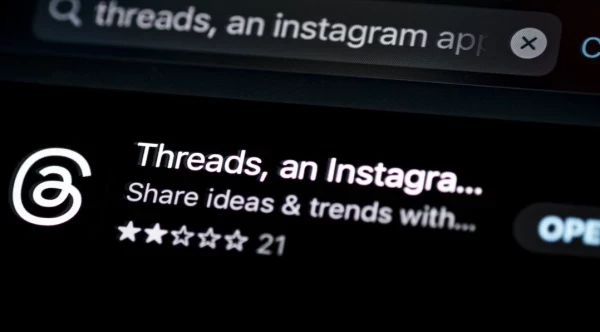3 Reasons Media Companies Need to Focus More on “Intelligent CX” in the Future
Add bookmark
Whether you’re a financial analyst living in New York City or a farmer in rural Missouri, you rely on digital media every single day (unless you live under a rock. Even then, you probably still have a Twitter handle and an ESPN account). Nearly 30% of American adults (not even the mobile addicted Gen Z consumers) claim to be online “almost constantly.” And according to an NBC report, online advertising revenues in the U.S. totaled $107.5 billion for 2018 — the first time that figure has topped $100 billion.
Read More: Why Experience Design Will Be Your Biggest Marketing Differentiator in 2025
With such a massive market for digital media companies (from marketing software startups like Optimove to the Wall Street Journal’s parent news company, Dow Jones), intelligent customer experience has never been more paramount. The term “intelligent CX” has been given a few different definitions as the topic becomes increasingly relevant, but it can best be summarized as the interconnected and data-driven journey between consumer-focused marketing, sales, and customer support. Successful media companies are learning from the past and redefining the customer experience future by bringing the consumer journey full circle with new capabilities like machine learning algorithms and SEO strategies.
The Netflix strategy
If there’s one thing Netflix should be remembered for before Disney (content king and owner of Marvel, Pixar, ESPN, National Geographic, etc.) crushes Netflix’s stock, it’s how they changed the way viewers watch television. Despite their 130 million subscribers (not counting your third cousin’s friend’s x fiancé using your password), Netflix coined the concept of personalized television experiences for each user. They’ve utilized intelligent CX tactics to anticipate and find media for the user, eliminating friction points along the way. Netflix’s recommendation algorithm is based on aggregated data ranging from search results, previous viewing experience, and time spent in the Netflix application, resulting in an extremely dexterous and personalized feed for the consumer.
When it comes to personalizing a media company’s product (like Netflix’s recommended shows, Amazon’s audible books, or Dow Jones’ financial media tailored for individual interests), customer service, marketing, and data strategists need to work together to use predictive analytics and AI-based algorithms to deliver intelligent CX for each customer. You can thank personalized data driven algorithms like these for your first “Netflix and chill.”
Speed kills
Long gone are the days of publishing media and letting users navigate the viewing experience on their own. One of the biggest differentiators in the upcoming years for media will be how accurately a given company can give each customer what they want to read or watch… at that very moment.
Not only do predictive algorithms need to create actionable intelligence to personalize content for each consumer, speed will continue to become a differentiator in digital media’s UX. That doesn’t just mean making your companies’ services and products run smoothly or load fast. It means supporting it when it doesn’t. We live in a world where instant gratification is a consumer’s coveted drug and their attention spans are a business's Achilles heel.
Read More: 3 Self-Made Entrepreneurs Who Correctly Predicted the Future of Customer Centricity
As customers spend more time consuming media online from more and more outlets, there is an increasing expectation that the businesses they interact with have an immediate online presence—and to get answers and information from them as quickly as possible. Instant chat, daily-updated Twitter feed, and replies to comments are great ways for larger media companies to beat out competitors and for smaller ones to enhance their “personalization reputation.” Real-time digital communication will be a key factor in how well your media service performs
Listening to more than just the numbers
Using customer data and machine learning (SEO, search history, user interests, etc.) to develop the right algorithms for individualized and personalized content is a must when it comes to a media company’s UX and experience design. In order to remain competitive, businesses must also interact with consumers on a regular basis in order to ensure they are giving their larger target markets what they want.
“Most of my brain power is focused on talking to subscribers and even nonsubscribers to get their impressions of the homepage to see how the offerings might be better. We do in-person interviews and we work closely with our Customer Intelligence team to see what sort of feedback they’re getting, so I literally mean what they’re saying… Analytics show what people are clicking on, but what people say and what they do aren’t always the same thing. So it’s up to us to take all of that data, sort through the variables, and figure out what they truly want,” said Bonnie Jarvie, senior web designer for Dow Jones in a recent article.
Gaining valuable intel through consumer insights and face to face communication has been important for Dow Jones. Analytics are crucial, but so is the interpretation and communication of data intelligence. What is also worth noting is the cross-functional communication between departments, delivering intelligent CX.
Read More: NBA Marketing Taking Customer Experience to the Next Level
“We know customer experience design. So we are relying on the product specialists and marketers… It’s working really closely with the teams to figure out what might be best in class, and then make it nuance for that particular region,” said Alison Lichtenstein, Dow Jones’ former marketing manager and current Director of Customer Experience Design. Personalized content, real-time customer interactions, and active listening/communication will be increasingly important strategies for the customer centricity of the media industry.
Want to learn more on the future of customer experience design? Tune in to our live event, The Contact Center of 2025, on December 3rd and 4th where Dow Jones’ Alison Lichtenstein will be one of our guest speakers. Get ahead of competitors and introduce yourself to analysts’ predictions and upcoming cutting-edge technology trends at our complimentary online summit.




























